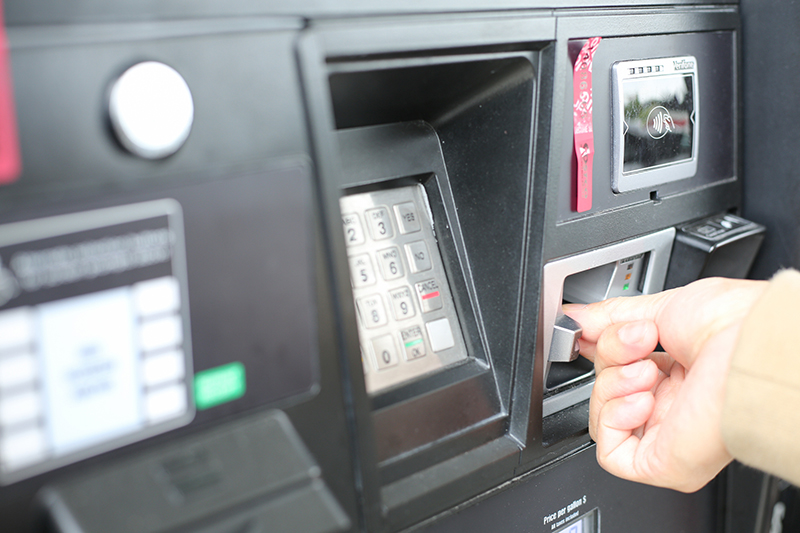Best Practices to Keep Fuel Cards Secure

Using fuel cards for fuel purchases or vehicle maintenance — such as oil changes, repairs, and tire services — provides fleets with distinct advantages that traditional credit or debit cards don’t offer. Top fleet management benefits include:
- Cost Controls and Savings: Setting controls on how much drivers can spend, what they can purchase, and purchase times and locations, in addition to accessing fuel discounts with rebates per gallon or bulk pricing.
- Detailed Reporting and Tracking: Itemized transaction details like time, date, location, driver ID, and more. Plus, real-time alerts when unusual transactions occur, such as purchases over a set dollar amount, fueling outside approved hours or locations, or use of unauthorized fuel types.
- Simplified Accounting: Tracking fuel and maintenance expenses in one place, eliminating the need to collect and match individual paper receipts. Not to mention the benefit of automatic logging of transaction details, which makes it easy to categorize and analyze expenses without manual data entry.
But while fuel cards offer significant advantages, there is a catch. If best practices to keep fuel cards secure aren’t followed by you and your drivers, those strategic fuel management advantages can quickly disappear and potentially impact operations and the bottom line. And not in the way you want.
In fact, fuel card misuse and fraud can lead to major financial losses, reputational damage, regulatory fines, and even give criminals a back door for future fraud.
Whether your fleet already uses fuel cards or you're considering implementing them, protecting your fleet from fuel card fraud is crucial for reducing misuse and safeguarding your operations. We've compiled tested and proven fuel card best practices for drivers and fleet managers, so you can be confident that your fuel card program remains secure and effective.
How to Prevent Fuel Card Fraud
Best Practices for Fleet Managers
Monitor Usage
Consistently monitor fuel card transactions to identify suspicious or out-of-limits activity, including frequency of fill-ups, fuel volumes, out-of-route fueling, and duplicate transactions. Report any unauthorized transactions immediately to minimize your liability.
Stay on Top of Fuel IDs
Properly assigned IDs make it easy to accurately track who is buying fuel, how much they’re buying, and when and where. This enhances visibility and accountability, allowing you to quickly identify and flag suspicious activity.
Review Fuel Card Limits
Regularly reviewing fuel card limits helps prevent misuse, keeps budgets under control, and optimizes spending. Without proper limits, drivers could make unauthorized purchases, such as fueling their personal vehicles or buying non-fuel and non-maintenance items.
Reviewing limits also ensures drivers aren’t overspending or fueling more than necessary. Lastly, reviewing limits allows you to adjust card limits as your fuel needs change because of fuel price increases, new routes, or seasonal demand.
Limit Spare Fuel Cards
Unused or unassigned fuel cards floating around can be an easy target for misuse by employees and outsiders. Reducing the number of unused cards reduces the risk of unauthorized purchases. Spare cards aren’t assigned, making it harder to pinpoint who used them when an incident occurs. If you have spare cards, make sure they are stored in a secure and locked location.
Cancel Fuel Cards
If a driver is terminated, a fleet vehicle is sold, or a fuel card is lost or stolen, cancel the card immediately.
Best Practices for Drivers
Keep Cards Securely Stored
At all times, drivers should keep their fuel card in a secure location and never in their vehicle — even if the vehicle is locked.
Keep PIN Confidential
Never share the fuel card PIN with anyone, including coworkers. Memorize the PIN and never write it down.
Choose Pump Wisely
It’s best to use pumps that are located closest to the store or fuel station attendants. Thieves are less likely to install card skimmers on these pumps. Pumps out of the attendants’ view are easier targets and more likely to be tampered with.
Check the Card Reader and Look For Pinhole Cameras
The card reader at the pump should be firmly attached to the casing. Wiggle it to see if it’s loose, check that security stickers aren’t broken, and confirm it looks similar to readers at other pumps. If there are no security stickers on the pump, don’t take chances and go to another pump.
Thieves use pinhole cameras at fuel pumps to steal PIN information. Cameras record the PIN as it’s entered, and when used with a skimmer, thieves can fully clone the fuel card or withdraw money.
Pinhole cameras are so small — sometimes the size of a screw head — that they can be difficult to detect. Typically, they’re installed near or above the keypad and are often hidden in fake panels or molding, brochure holders, and overhead light casings.
To protect information, use both hands — one for the transaction and the other to place above the screen to shield the keypad from the view of the camera. You can also pay the attendant inside to avoid using the pump card reader.
Prevent Fuel Card Fraud, Protect Your Fleet
Fraud is at an all-time high. Data from the Federal Trade Commission (FTC) showed a significant increase in reported losses due to fraud, totaling $12.5 billion in 2024. Because fuel cards are powerful tools for fleets, it’s vital to build your program with security in mind.
By implementing best practices to keep cards secure, both fleet managers and drivers can help prevent misuse and reduce the risk of fraud. A little vigilance goes a long way in keeping your operations efficient and protected.
Interested in learning how to set up your fleet fuel card program? Read our guide here to get a roadmap.